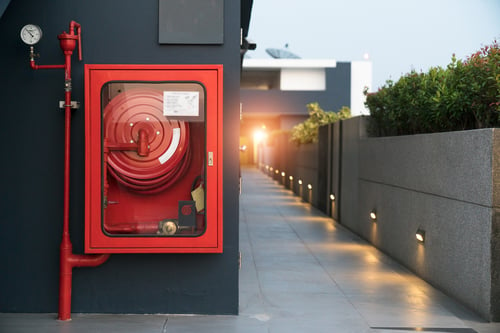How Building Codes and Product Certifications Help Developers?

In new constructions and major renovations, building codes are often regarded as a checklist that must be met if the project is to proceed legally. A similar situation applies for products labeled by UL and other Nationally Recognized Testing Laboratories (NRTLs), where compliance is often associated with unavoidable expenses. However, even if building codes and certified products were optional, they would still be the best business decision.
Building codes and product certifications protect the investment of real estate developers while safeguarding occupant health. Without them, buildings would be unreliable and unsafe - this article describes some aspects that would be affected without codes and certifications, emphasizing the importance of professionals who master building codes to ensure structural integrity and safety.
Make sure you meet building codes, while using safe appliances.
Utility Bills: Electricity, Gas and Water
Building codes establish a performance baseline for all buildings under the local jurisdiction. While code compliance requires design work, it also guarantees a minimum performance level. For example, there are minimum flow rates for plumbing fixtures, while electrical and combustion appliances are regulated by energy codes. A building with a performance level below code requirements would have higher utility bills than compliant buildings.
When a cost-benefit analysis is applied to the entire life cycle of a building, cheap and inefficient appliances are outclassed by high-performance equipment, in spite of the added cost. Consider the following example:
-
A building with LED lighting and variable refrigerant flow systems is more expensive than a building with fluorescent lighting and packaged HVAC units.
-
However, LED lighting and VRF systems have a lower ownership cost in the long run.
Building codes can be meet without using the latest technologies in the market, since they typically establish a performance level that balances cost and efficiency. However, exceeding building code requirements often pays off.
Occupant Comfort and Health
Building codes provide detailed guidelines to size MEP installations, and ignoring them would lead to oversized or undersized equipment. Building performance suffers in both cases, as demonstrated by the following examples:
|
Building System |
Issues when Undersized |
Issues when Oversized |
|
Lighting |
Reduced visibility is dangerous, and many tasks become more difficult. |
Excessive lighting can be uncomfortable, especially if it causes glare. |
|
HVAC |
Undersized HVAC systems cannot control temperature effectively. |
Oversized HVAC systems are more expensive, and more demanding in terms of maintenance. |
|
Ventilation |
Insufficient airflow is detrimental for indoor air quality, affecting occupant health. |
Oversized fans cause excessive air speed, which can be uncomfortable. They can also be noisy. |
|
Booster pumps |
An undersized pump may be unable to supply enough water during high-demand hours. |
If a booster pump is too large, it can cause excessive pressure. Some plumbing fixtures may be damaged. |
When designing MEP installations, an optimized capacity tends to achieve the best results. More capacity is not necessarily better, since it adds expenses without improving performance. Improved energy efficiency is a much better investment.
There are many product labeling programs that target energy efficiency. These products tend to have a performance level that exceeds code requirements, but they are normally required if you want to apply for a local rebate program.
Building Safety

Other than dealing with building system performance, building codes also guarantee safe conditions. Poorly-designed building systems are more likely to break down, and some system failures can be very dangerous for occupants. For example, when electrical installations are affected, the associated risks include electric shock and fire.
In fact, fire protection is among the topics covered by building codes. The cost of fire protection measures is only a fraction of the damage costs if a major fire occurs, not to mention that insurance companies offer better conditions when a building is well protected.
Labeled products play an important role in building safety. For example, a label from UL or ETL indicates that the product has been subject to rigorous fire safety tests under laboratory conditions.
Conclusion
A non-compliant building would likely have a very low construction cost, but it would also be inefficient, uncomfortable, unhealthy and dangerous. This is precisely why code compliance is legally enforced - a minimum level of building performance and safety is beneficial for owners, occupants and the entire city.
The simplest way to meet codes is by working with a qualified engineering firm. Building codes are constantly changing, and keeping up with their updates is unfeasible without the help of professional MEP engineers.

Anuj Srivastava
Anuj Srivastava is a principal partner at NY Engineers. He is known for his MEP franchise market knowledge. Anuj is currently leading a team of 100+ MEP/FP engineers and has successfully led over 1500 franchise projects in the US.
Join 15,000+ Fellow Architects and Contractors
Get expert engineering tips straight to your inbox. Subscribe to the NY Engineers Blog below.

